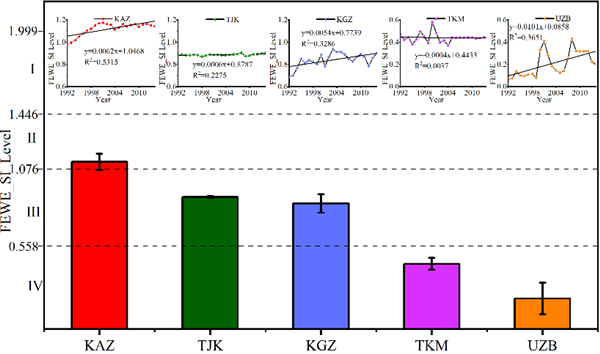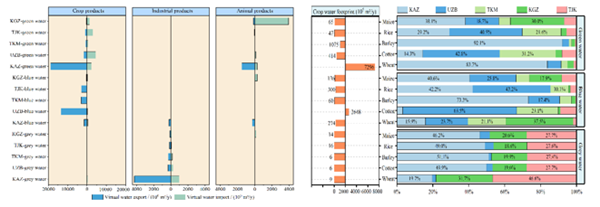Study Revealed the Transmission Mechanism of Water– Energy–Food–Ecology Systems Pressure in Central Asia
2022-02-24
Researchers from Xinjiang Institute of Ecology and Geography, Chinese Academy of Sciences have found the transmission mechanism of WEFE systems pressure in Central Asian countries.
The findings were published in Renewable and Sustainable Energy Reviews on 6 January 2022, entitled "Comprehensive evaluation and sustainable development of water–energy–food–ecology systems in Central Asia".
With the increasing demand for energy and food, environmental degradation, and increasing pressure on regional finite water resources, water-energy-food-ecology (WEFE) systems have been facing serious challenges in Central Asia. However, it is not yet clear what kind of relationship exists between the sectors of Central Asian countries, and the pressure status of the sectors.
In this study, the researchers, based on the projection pursuit model and the virtual water trade concept, comprehensively assessed the WEFE system pressure and revealed the transmission of pressure.
Results showed that there are considerable differences in the WEFE system pressure level between countries. The main reason behind this could be that decisive role played by water in the WEFE system. The pressure transmission originates from the upstream countries (TJK and KGZ), whereas the downstream countries (TKM and UZB) are the main bearers and spreader of the pressure. The most important medium for pressure transmission is the virtual water trade of crop products, especially cotton and wheat. The unified management of water resources by upstream and downstream countries is the guarantee to achieve the sustainable development of the WEFE system in Central Asia.
Article link: https://www.sciencedirect.com/science/article/pii/S136403212101323X

Fig. 1 Variations in water-energy-food-ecology system pressure level (WEFE_SI Level) in Central Asian countries during 1992–2014.

Fig. 2 Virtual water trade in crop, animal, and industrial products in Central Asian countries during 1996–2005 (Left) and water footprint of main crops in Central Asian countries (Right).



